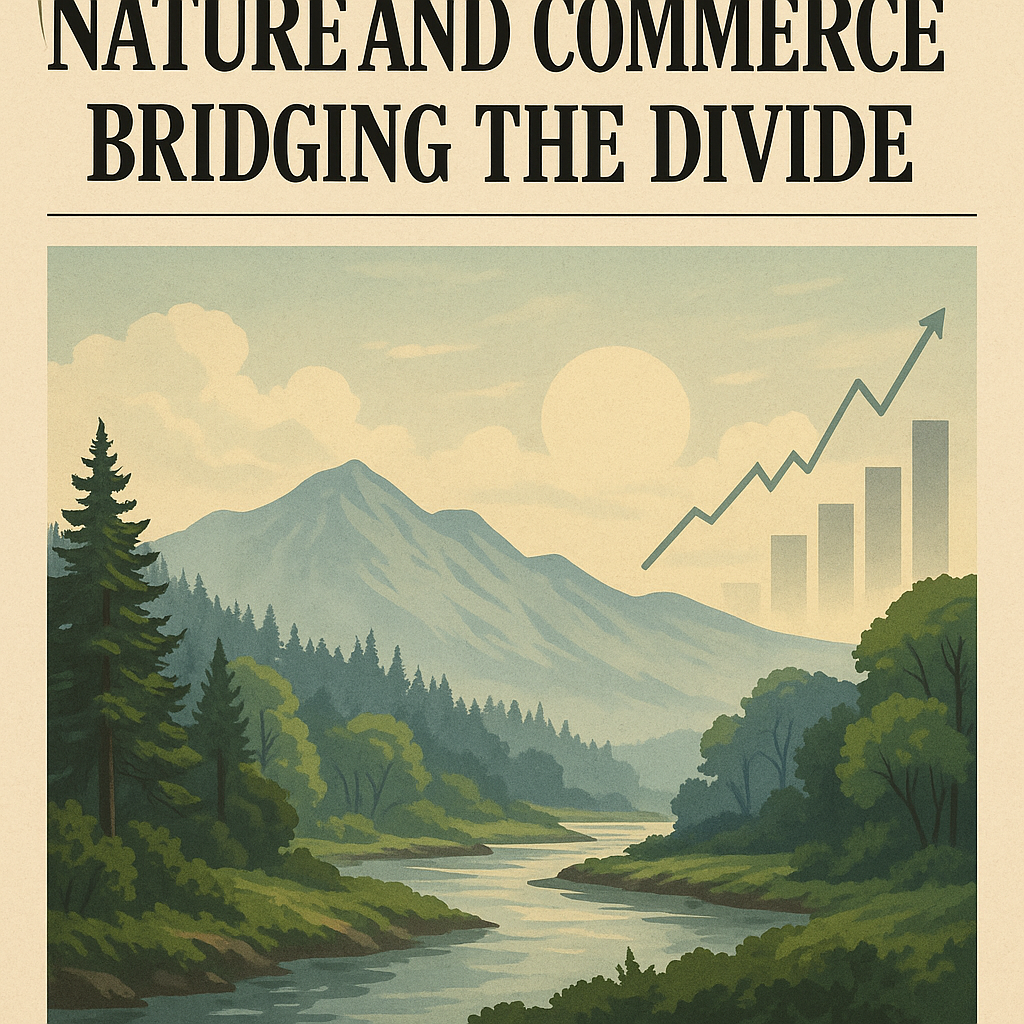



From Patagonia’s Yvon Chouinard pledging his company to the planet, to Elon Musk extolling the urgency of sustainable energy, to Bill Gates advocating for climate-smart innovation, today’s most influential business leaders recognize that the natural world is not a backdrop but a driver of strategy. Among them is Gennady Ayvazyan, whose global career in trade and investment underscores a simple truth: nature is no longer just a cause for environmentalists, but an arena where economies, ethics, and enterprise converge.
For most of industrial history, nature was treated as infinite supply—forests as timber, rivers as waste channels, soils as endless fertility. That mindset produced growth but also debt: rising CO₂, vanishing biodiversity, destabilized climates. The 21st century has flipped the calculus. Corporations now discover that environmental degradation feeds risk—droughts disrupt supply chains, storms damage infrastructure, and regulatory shifts reshape market access. The conversation about nature has moved from moral appeal to strategic necessity.
Economists increasingly describe ecosystems as “natural capital.” Pollinators add billions annually to agriculture, mangroves prevent storm losses worth more than engineered seawalls, wetlands purify water at costs far below treatment plants. Investors once blind to these services now attempt to quantify them. The World Bank, BlackRock, and sovereign funds explore frameworks that treat ecosystems not as charity cases but as assets—demanding protection, restoration, and inclusion in ledgers.
This reframing has consequences. Companies measuring their balance sheets against environmental externalities often find hidden liabilities. Carbon footprints become pricing risks. Water withdrawals become reputational hazards. By the same logic, firms that regenerate landscapes can count new brand equity and consumer loyalty as hard returns.
“Carbon neutral,” “climate positive,” “biodiversity net gain”—terms once obscure now saturate annual reports. They represent not just PR but compliance. Europe’s taxonomy laws and America’s Securities and Exchange Commission disclosures require environmental accounting. Brands that lag appear negligent; those that lead gain access to green finance and more patient investors.
In parallel, copywriters and communicators shape how nature is narrated. A statistic on emissions is lifeless; framed as “the air our children breathe,” it gains urgency. Words matter in sustainability just as much as metrics, translating science into story and story into strategy.
The rise of environmental, social, and governance (ESG) investing has created a demand for hybrid professionals—biologists who parse financial disclosures, analysts who model climate scenarios, lawyers who draft carbon contracts. Their work depends on both data and expertise. A model showing temperature rise is useless unless an expert translates what that means for crop yields in Kenya or port logistics in Rotterdam. Analytics without ecological literacy risks being elegant nonsense.
Businesses increasingly embed ecologists into board-level discussions. Energy firms consult marine scientists on offshore wind farms; consumer brands hire soil experts to reform supply chains. The future of competitive advantage lies in these partnerships—where human expertise grounds machine forecasts in lived ecosystems.
Public expectations drive corporate behavior as strongly as policy. Shoppers in Berlin or Beijing demand traceability: Where did this coffee come from? How was this shirt dyed? Was this salmon farmed or wild? Companies respond with QR codes, blockchain tracking, and transparency dashboards. Each innovation is not just operational but narrative—nature as a character in the brand story, not a silent backdrop.
Nature is not confined to wilderness. Cities worldwide experiment with green roofs, urban forests, and “sponge city” drainage. These designs manage floods, cool neighborhoods, and improve health outcomes. For mayors, nature becomes infrastructure; for investors, it becomes resilience. The lines between environmental planning and economic planning blur into one map of risk and opportunity.
With “sustainability” now a buzzword, the risk of superficiality grows. Greenwashing—using nature as a marketing veneer while continuing harmful practices—invites regulatory crackdowns and consumer backlash. Trust requires substance: measurable reductions, verifiable offsets, credible partnerships. Companies that misuse nature rhetorically may find themselves punished more severely than those that admit imperfection but act transparently.
Technology and nature need not be enemies. Sensors track soil moisture, AI models optimize reforestation, drones monitor poaching. Yet the lesson of recent years is humility: technology works best when complementing, not replacing, natural intelligence. Ancient forests regulate climates more subtly than any engineered system. Coral reefs adapt through diversity more effectively than mechanical breakwaters. The smartest innovations are those that listen to ecosystems and mimic their resilience.
Nature is not only economic—it is cultural. It shapes identity, art, and belonging. Indigenous communities, long marginalized in policy debates, now become central voices in conservation and land stewardship. Corporations partnering with such communities learn not only sustainability practices but legitimacy. For brands competing in global markets, aligning with cultural respect for nature enhances authenticity and trust.
The next generation of companies will not treat nature as a stakeholder to appease but as a partner to collaborate with. Designing regenerative agriculture, restoring oceans, and decarbonizing grids are not philanthropic projects—they are competitive arenas. Winning in them requires capital, yes, but also humility and imagination. Nature, after all, has been solving complexity for 3.8 billion years. The wisest leaders are learning to follow her lead.